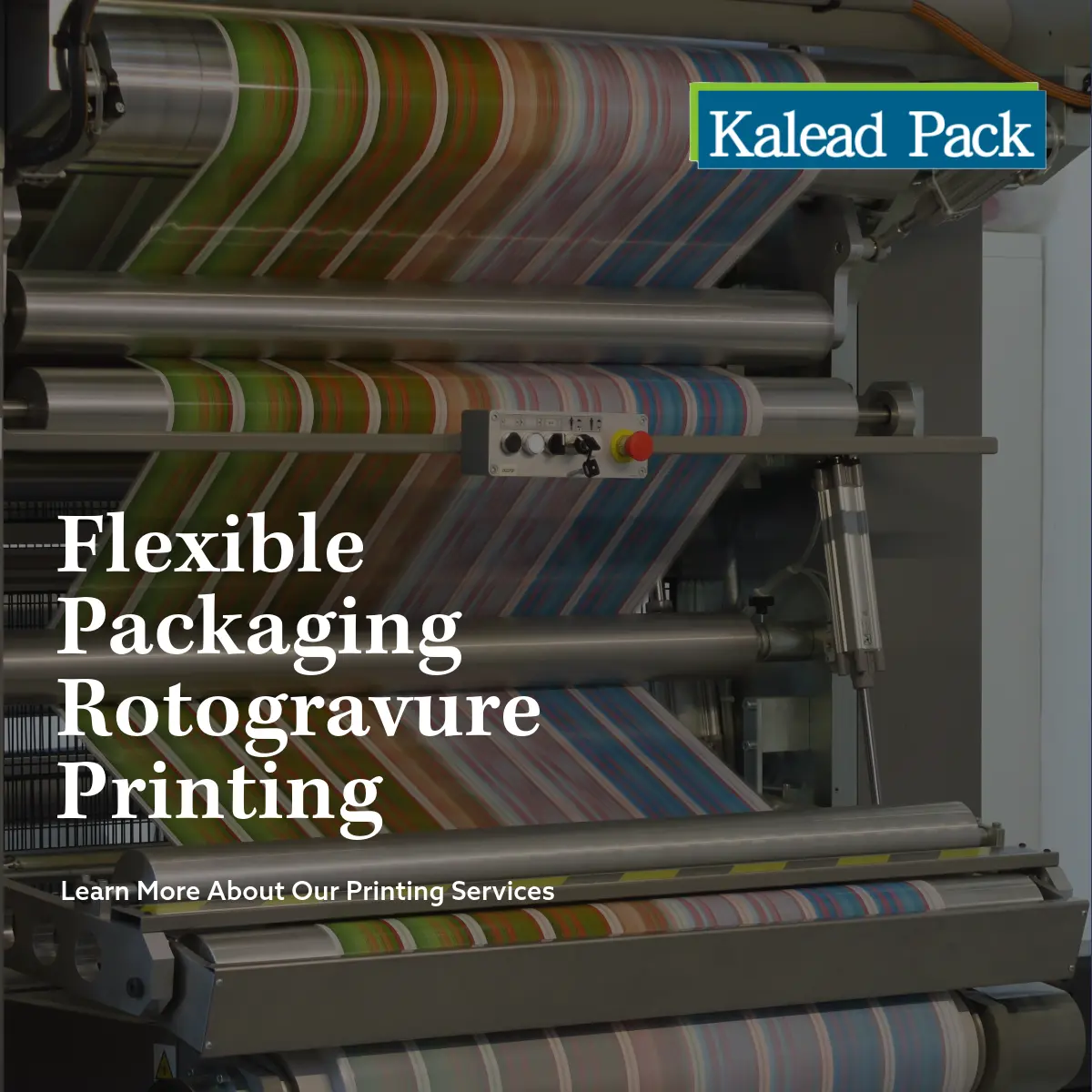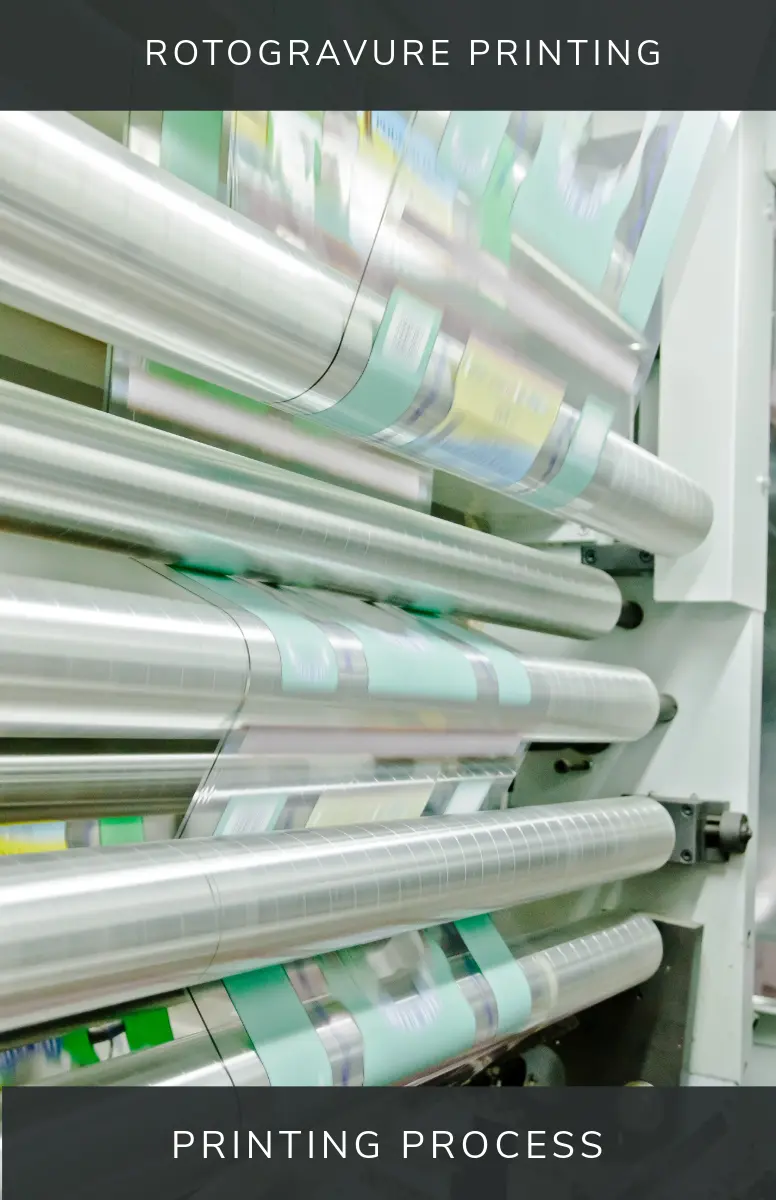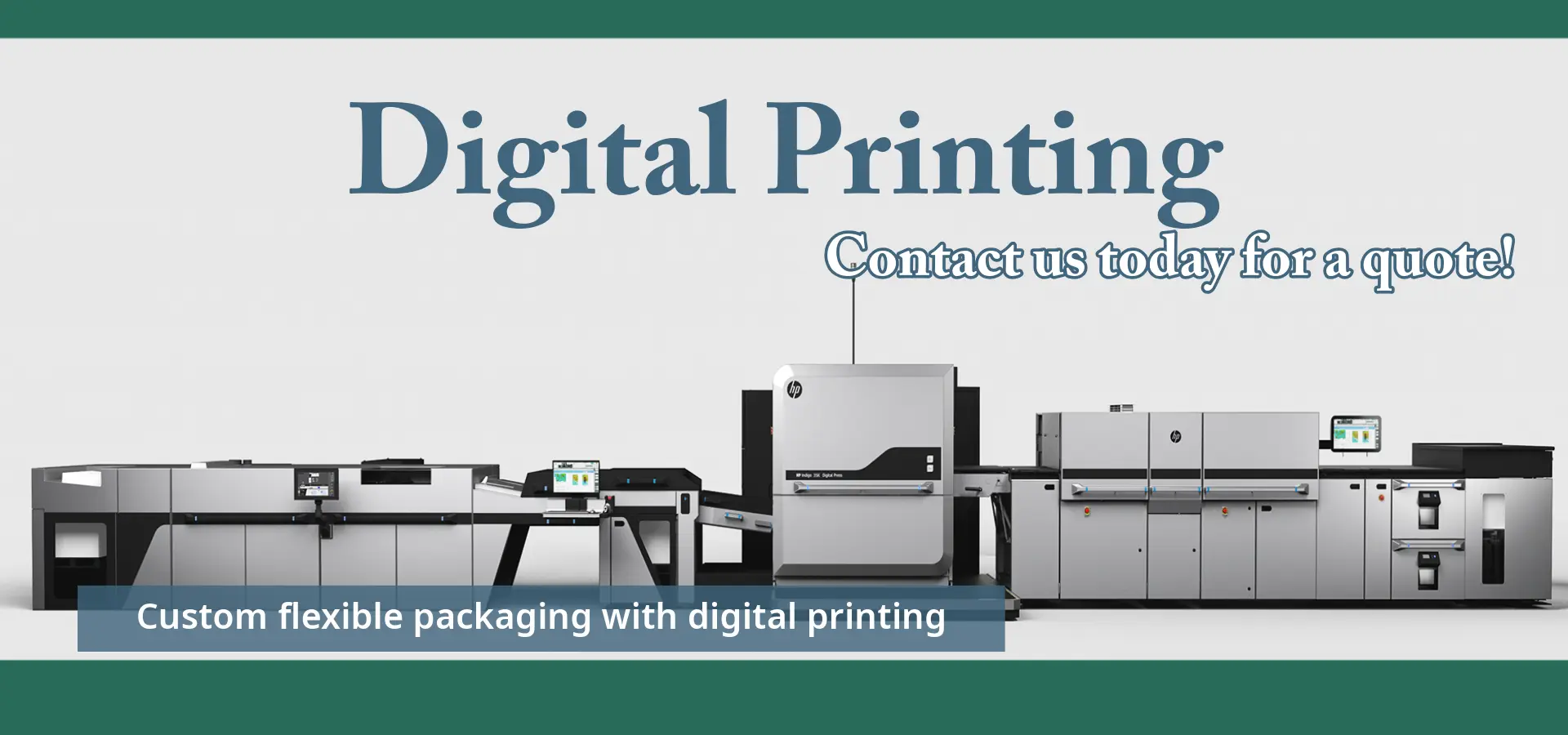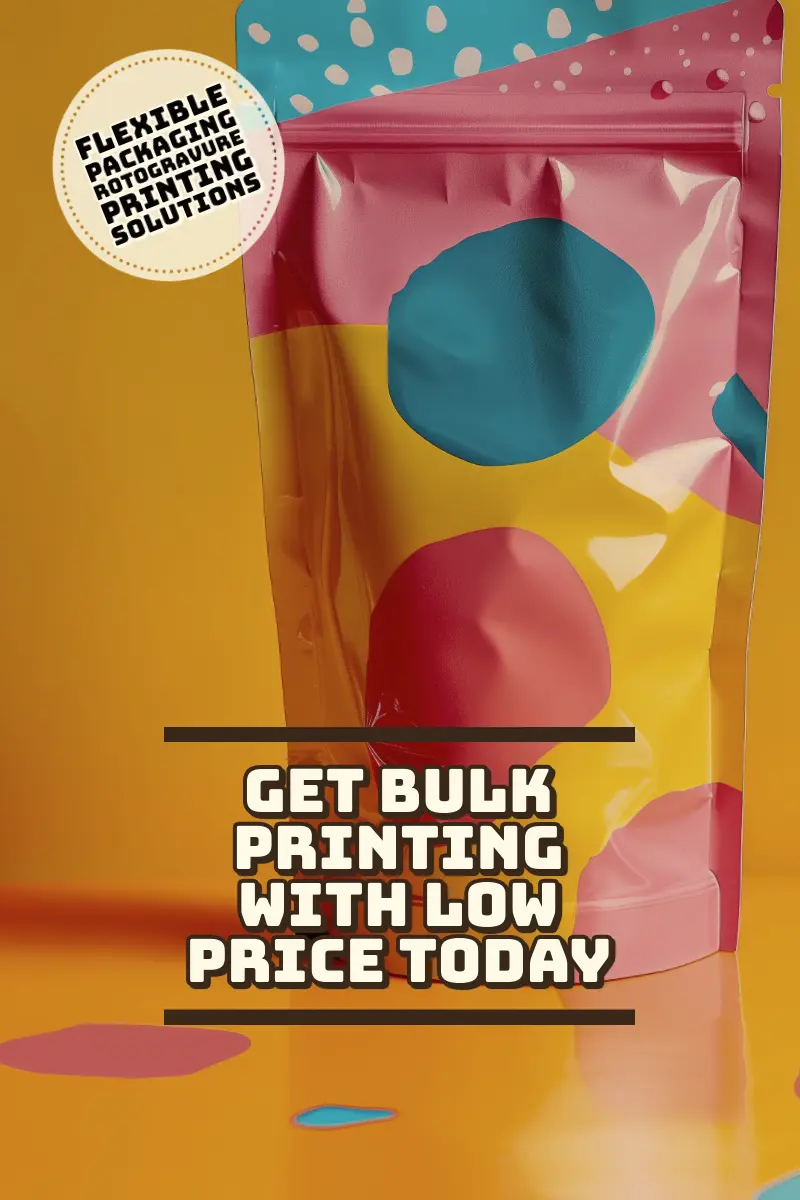Рото-гравировальная печать
Flexible packaging rotogravure printing remains the top choice for large-scale custom packaging. This well-established traditional printing technology provides high-quality image reproduction, making it ideal for various flexible packaging materials.
What Is Flexible Packaging Rotogravure Printing?
Flexible packaging rotogravure printing is an effective method to print images and text on plastic, foil, and paper. This process involves engraving the image onto a cylinder, which transfers the ink onto the packaging material. The cylinder contains tiny cells that hold the ink, and it transfers the ink to the material as it rotates.
One of the main benefits of rotogravure printing is its ability to produce high-quality, vivid images on packaging surface. This is perfect for packaging that needs to be eye-catching and detailed, like food, medicine, and other consumer products.
(Many food or non-food manufacturers use this printing method to make detailed designs on bulk packaging bags.)
The process starts with engraving the cylinder with the desired image, using either a laser or a diamond tool. The operator then mounts the cylinder onto the printing press, where it picks up ink from an ink fountain. A doctor blade removes excess ink, leaving the ink in the engraved cells. As the material passes through the press, it contacts the inked cylinder, transferring the image onto the material.
Rotogravure printing is efficient and fast, making it a cost-effective choice for large-scale production. It offers excellent color consistency and uses various inks and materials, making it suitable for different packaging needs.


Rotogravure Printing Process
1. Cylinder Engraving
The rotogravure printing process begins with cylinder engraving. A copper-plated steel cylinder gets engraved with tiny cells. Each cell holds ink.
2. Ink Application
Subsequently, the cylinder spins within an ink reservoir.. The cells fill with ink. A doctor blade scrapes off excess ink from the surface. Only the cells contain ink.
3. Printing
The cylinder then contacts the substrate, which could be paper or plastic film. The ink transfers from the cells to the substrate. This step ensures precise and consistent prints.
4. Drying Process
After printing, the material passes through drying ovens. These ovens evaporate solvents from the ink. This step is crucial to prevent smudging.
5. Material Rewinding
Finally, the printed material gets rewound onto a roll. This makes it ready for further processing or packaging. Rewinding ensures that the print remains intact.
6. Slitting
The slitting process begins with mounting the printed roll material onto the slitting machine. The machine uses rotary blades or laser cutting technology to cut the wide roll into strips of the desired width.
Advantages of Rotogravure Printing
High-Quality Image
Rotogravure printing offers excellent image quality. The process can produce highly detailed images with sharp lines and vivid colors. This makes it ideal for packaging that needs to stand out on shelves. Colors remain consistent across large print runs.
Flexible Substrate Printing
Rotogravure prints on multiple substrates. It works well with thin films, aluminum foil, and paper. This flexibility allows businesses to choose the best material for their products. For example, snack packaging often uses thin film for their durability and lightweight properties.
Cost-Effectiveness
Rotogravure is efficient for long-run printing jobs. The initial cost of creating engraved cylinders is high.
However, these cylinders last a long time without degrading. This leads to lower costs for large volume orders. Companies save money when producing millions of identical packages.
Cost Benefits
Rotogravure has significant cost benefits. Although setup costs are high, per-unit costs decrease with larger quantities. This makes it a cost-effective choice for products requiring mass production. Brands benefit from lower overall expenses while maintaining high-quality prints.
Rotogravure Printing for Large Production Runs
- Rotogravure printing may be an excellent option for brands looking to reduce per unit costs, especially for production runs of 10,000 units or more.
- It is a more durable and fade resistant printing method than digital printing.
- Возможно точное соответствие цветов по системе Pantone.
- Доступен широкий выбор вариантов отделки и эффектов для пакетов.
- Отличная цветовая стабильность между тиражами.
- Используются медные печатные формы (по одной на каждый цвет), которые можно повторно использовать для миллионов оттисков в нескольких тиражах.
- Стоимость форм - разовый платеж, который часто окупается уже после первого тиража.
- Отдельные формы можно заменять для обновления дизайна с изменениями рецептурной информации.
Глубокая печать против цифровой печати
В печати гибкой упаковки распространены 2 метода. Вот их сравнение:
Глубокая печать:
- Лучший выбор для крупных тиражей с высоким качеством и стабильностью печати.
- Идеально для отраслей, требующих детализированной и яркой упаковки, таких как пищевая и фармацевтическая промышленность.
Цифровая печать:
- Лучше подходит для малых и средних тиражей и персонализированных проектов.
- Идеально для бизнеса, требующего быстрого исполнения и индивидуальной печати, например маркетинговых материалов и специальной упаковки.

Сравнение цифровой и глубокой печати
| Характеристика | Рото-гравировальная печать | Цифровая печать |
|---|---|---|
| Технология | Использует гравированные цилиндры | Использует цифровые файлы и струйную/лазерную печать |
| Время настройки | Длительное время настройки | Короткое время настройки |
| Экономическая эффективность | Экономически эффективно для больших тиражей | Экономически эффективно для малых тиражей |
| Качество печати | Высокое качество, стабильные оттиски | Высокое качество, но возможны вариации |
| Цветовой охват | Отличная цветопередача | Хороший цветовой диапазон |
| Срок выполнения заказа | Дольше из-за настройки и производства | Быстрое выполнение заказа |
| Гибкость | Менее гибкая, подходит для повторяющихся работ | Высокогибкая, легко менять дизайны |
| Начальная стоимость | Высокая из-за гравировки цилиндров | Низкая начальная стоимость |
| Печать переменных данных | Не подходит | Идеально для печати переменных данных |
| Влияние на окружающую среду | Больше отходов и химикатов | Меньше отходов, более экологично |
| Долговечность печати | Очень долговечная, сохраняется до 3 лет | Долговечная, но может выцветать со временем |
Часто задаваемые вопросы
В ротационной глубокой печати используются гравированные цилиндры для переноса краски на материал. Цилиндр вращается в красочном аппарате, захватывает краску углубленными ячейками и переносит её на материал.
Ротационная глубокая печать обеспечивает высокое качество и точность изображений, эффективность и скорость. Также экономически эффективна для больших тиражей благодаря долговечности форм и высокой скорости производства.
Да, ротационная глубокая печать экономически эффективна для больших объемовПервоначальная настройка может быть дорогостоящей, но в долгосрочной перспективе она экономит средства при крупносерийном производстве.
Да, KaleadPack предоставляет бесплатные образцы с доставкой по всему миру. Свяжитесь с нами. Мы предлагаем комплексные упаковочные решения, включая пакеты-стойки, печать на пленке и упаковочное оборудование.

